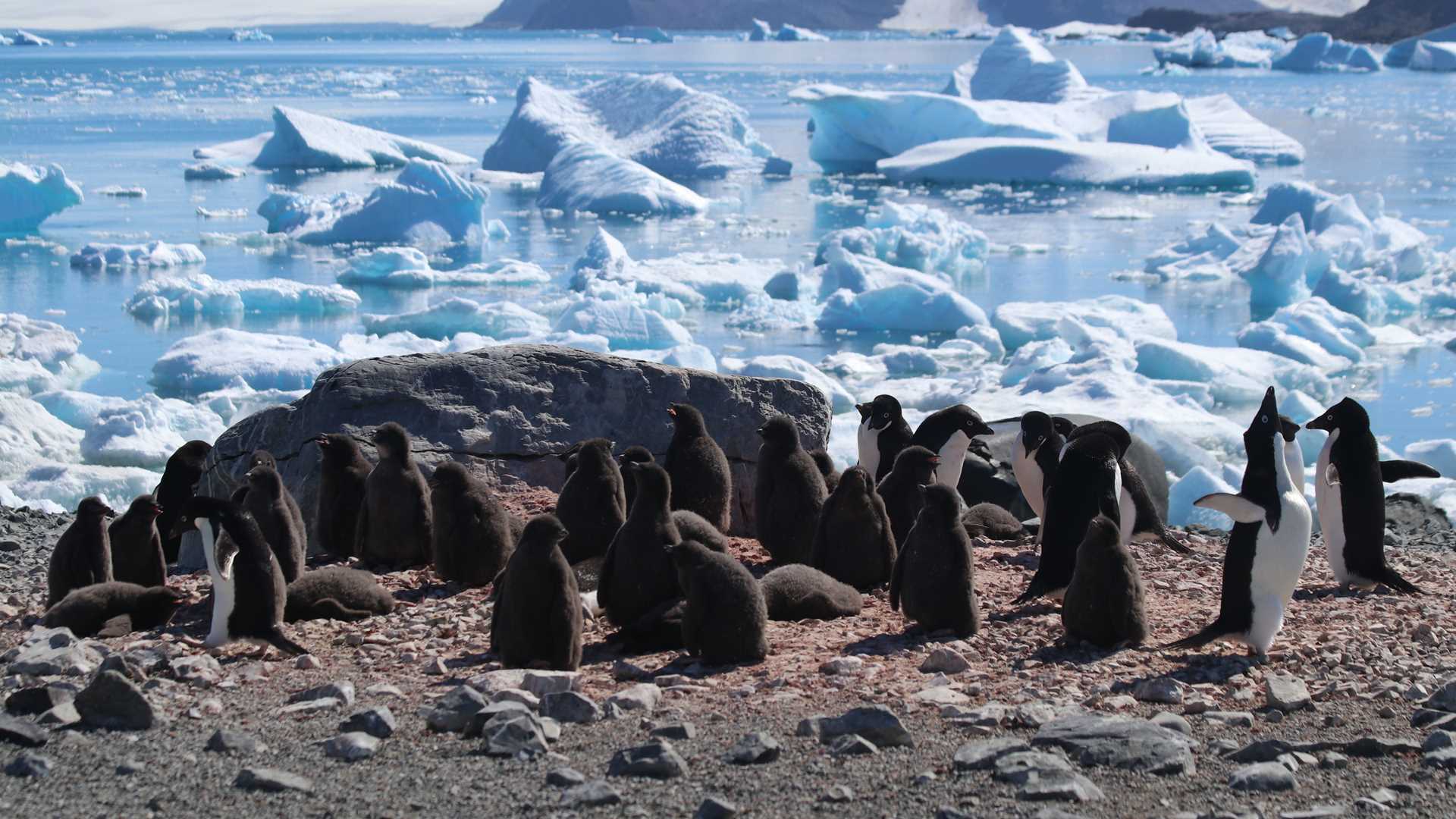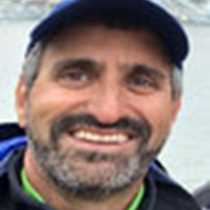The moon appeared in the clear morning sky over gently rolling seas at Heroina Island in the remote Danger Island archipelago, leading us to do a reality check to ensure that we are still on this planet. Satellite imaging seeking the telltale pink krill guano of penguin colonies only discovered the three-quarter million nesting pairs of Adelie penguins in these islands five years ago. We Zodiac cruised around Heroina under epic sunny skies with penguins everywhere: preening on the surface and porpoising around our boats, perching on chunks of tabular icebergs, and stacking up cautiously on shore waiting to be the first to enter the water, and rightfully so, as we found no less than seven satiated penguin-snacking leopard seals snoozing on ice floes in a natural harbor.
National Geographic Explorer transited through a field of tabular icebergs that blinked the sky white in a band of purple fog, reemerging into yet another sunny, surreal scene at Tay Head on Joinville Island. Weddell seals lounged and undulated on the beach near our landing. As we have become accustomed to seeing, glaciers lined any land in the panoramic distance. We hiked across volcanic barrens to the edge of this island’s ice dome, meandering around meltwater pools and giant petrel and skua nesting areas. We ultimately arrived at an Adelie penguin colony beside an orange, lichen-encrusted rocky outcropping with spectacular views above an ice-choked bay. Here, parent penguins tended fuzzy, brown, month-old chicks, occasionally protecting them from the advances of predatory skuas.
The expansiveness, scenery, ice, beauty, and bounty of life here at the tip of the Antarctic Peninsula, which is just the tip of the southernmost continent, are bewildering to the mind.







